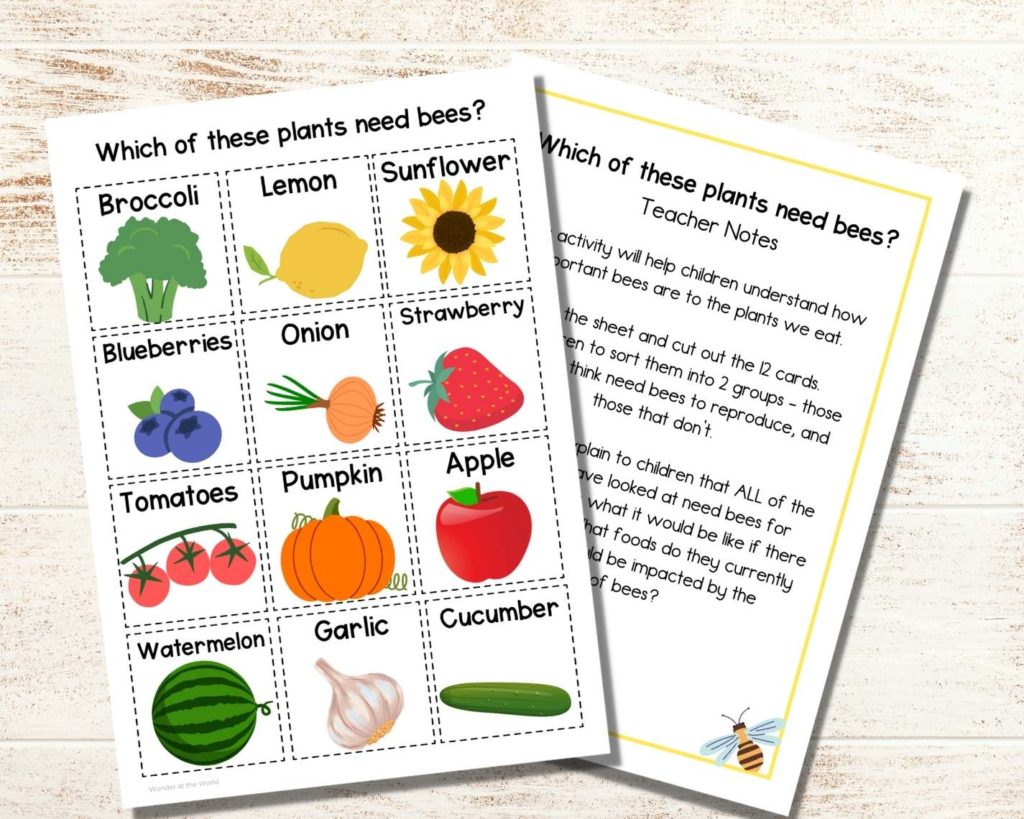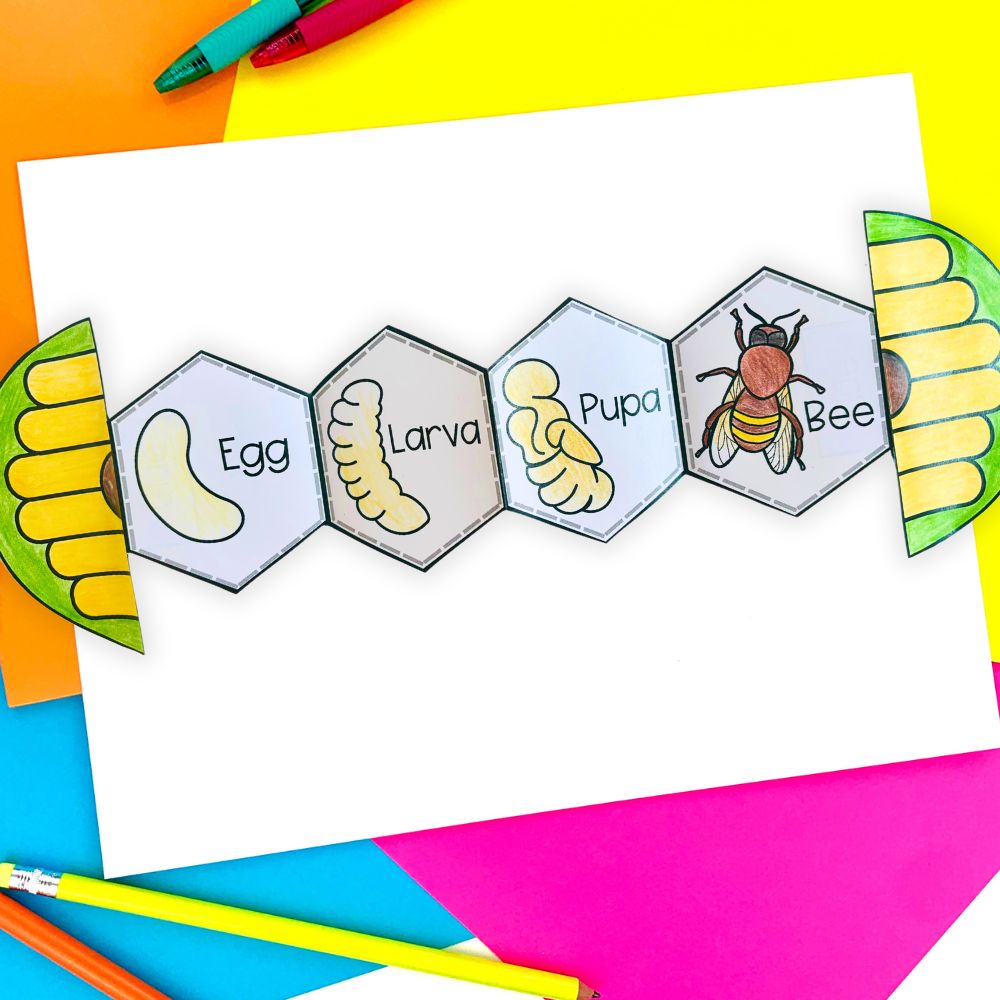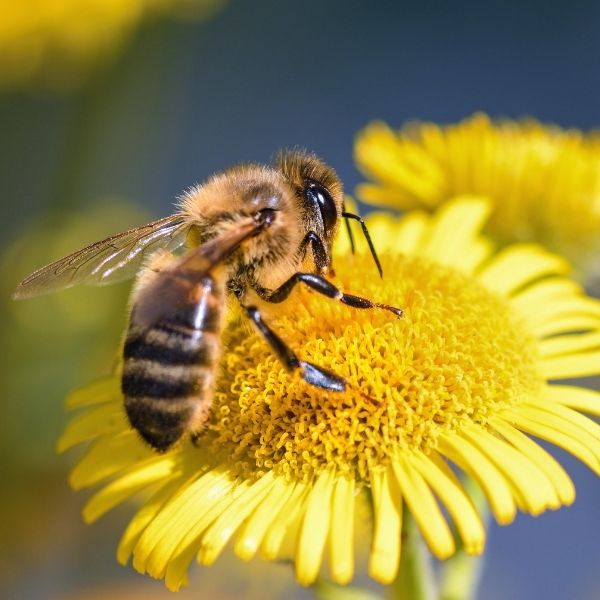20th May 2024 is World Bee Day – a chance to celebrate our fuzzy, buzzy friends and to raise awareness of why bees are important, and the threats they are experiencing. If you want to mark World Bee Day with your class, or want ideas for bee-themed activities throughout the year, you’ve come to the right place. In this blog post, I’ll share some ideas to get kids buzzing about bees!
Find out why bees are important
Try this sorting activity for children to find out which food plants bees pollinate. The cards can be printed, and cut out, ready for children to sort. They may be in for a surprise! You can download the cards for free here.

Interview a bee keeper
Does your local area have a beekeeping society? Why not see if one of the members is available to talk to children about looking after honeybees? They often have interesting equipment and clothing that children can look at, and give expert answers to kids’ questions (get the children to prep questions in advance).
Plant bee friendly plants
Make a buffet for local bees! Research together the types of native, nectar-rich plants that bees visit in your area. Plant seeds, seedlings, or plants (depending on the time of year) to provide bees with a place to rest and feed. You may wish to think about plants that flower in early spring or autumn, when there is less food around for bees (e.g. dandelion, ivy).
Read some books about bees together
Visit your library and find some bee themed books. This blog post from Growing Book by Book has some lovely suggestions for younger readers.
Learn about the life cycle of a honey bee
The honey bee has a fascinating life cycle, with 3 different types of adult bee living in hive. They start life as an egg in a chamber made of wax, before a wriggling larva hatches. Like many other insects, bees form a pupa to undergo metamorphosis, before emerging as either a queen, worker or drone bee.
You can find PowerPoint and Google Slides presentations of the honey bee life cycle for kids, as well as a foldable sequencing activity, in my TeachersPayTeachers store.

Watch a bee cam
This infrared live cam shows the inner workings of a bee colony living inside a large hollow log in the town of Buchloe, Germany. Observe the bees in action and take the opportunity to talk about what jobs they might be doing.
Try some honey-tasting
Try some different types of honey together. Do they all taste the same, or are there differences? You could rank the taste and record your class’s preferences (for a little cross-curricular maths link). Be aware, if you have vegan children in your class, chances are they don’t eat honey.
Make a bee hotel
Not all bees live in hives or communal nests. Some live alone and are called solitary bees. Solitary bees can spend the winter somewhere sheltered and safe as they await the warmer weather. They also look for nesting sites in the spring. You can provide somewhere for overwintering and nesting bees using untreated natural materials with spaces to hide. For tips about making a bee hotel, try the RSPB’s ‘build a bee hotel‘ page, or try this from The Wildlife Trusts.
Recommended Resources
- Complete Lifecycle: This set includes detailed figures representing each stage of a honey bee’s life cycle – egg, larva, pupa, and adult.
- Scientifically Accurate: Based on the Apis mellifera species, this set showcases the rapid transition of honeybees from eggs to hardworking adults within 21 days.
- Educational and Fun: Providing a peek inside a beehive, these figures are great tools for teaching kids about biological processes and the natural world. They also make great Montessori toys.
- Szymanski, Jennifer (Author)
- English (Publication Language)
- 24 Pages – 05/09/2017 (Publication Date) – National Geographic Kids (Publisher)
- Hardcover Book
- Socha, Piotr (Author)
- English (Publication Language)
- 80 Pages – 03/28/2017 (Publication Date) – Abrams Books for Young Readers (Publisher)
As an Amazon Associate, I earn from qualifying purchases at no extra cost to you. Thank you for supporting my blog by using my links.
A fun freebie
Would you like to stay up-to-date with my science teaching blog posts, plus hear about new resources and freebies. You can sign up for my email list and get a free life cycle of a tomato folding activity here.




